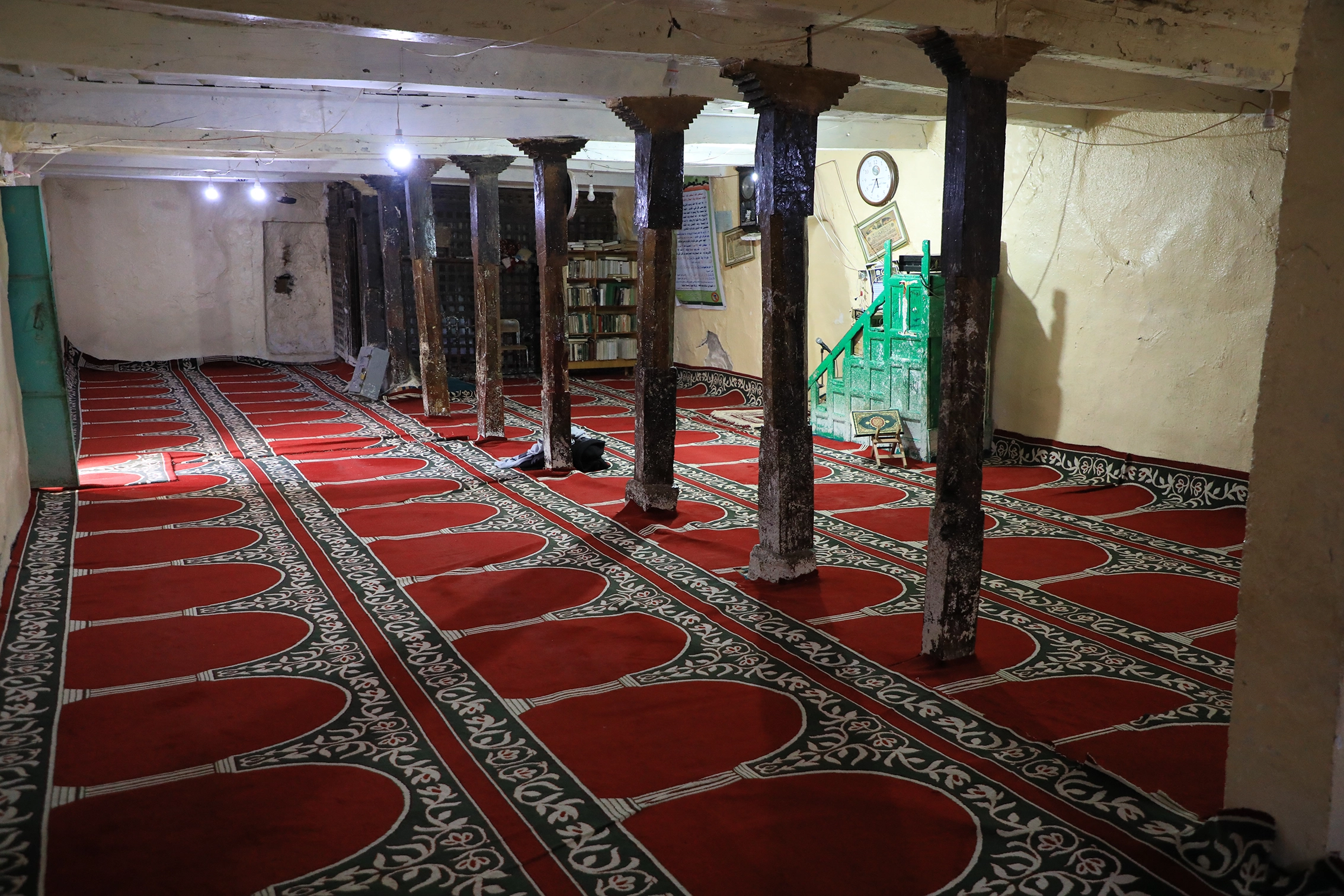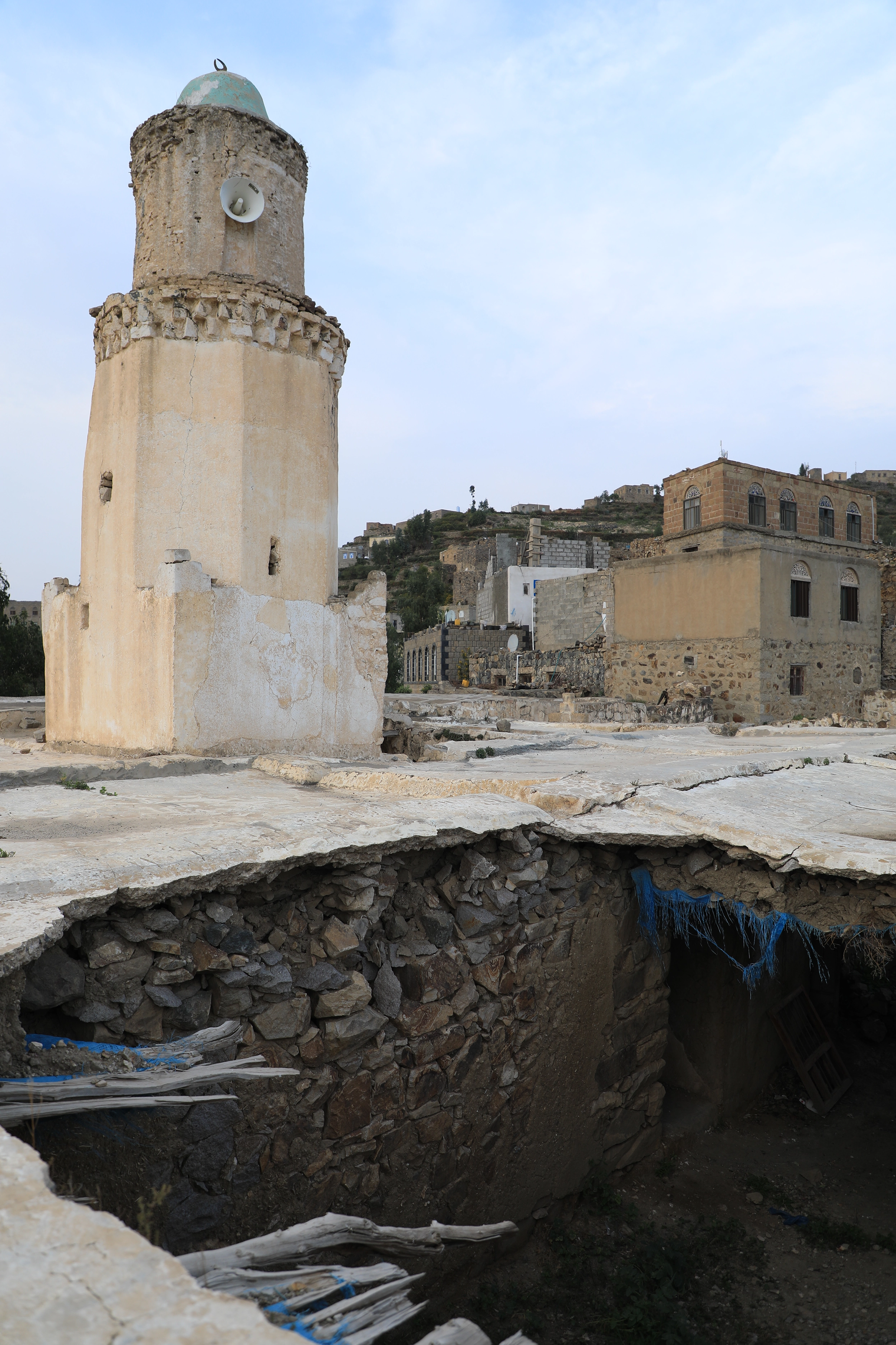On one of the towering peaks of Jabal Sabir overlooking the city of Taiz stands the “Cave Mosque” (Masjid Ahl al-Kahf), a prominent historical landmark in Yemen’s most populous governorate, often referred to as the cultural capital of the country.
Starting from the city center of Taiz, you can reach the Cave Mosque by private vehicle in about 45 minutes. The journey takes you through winding mountain roads up Jabal Sabir, leading to the village of Al-Miqqab, which hosts the mosque and is situated approximately 3,000 meters above sea level.
Some accounts claim that the mosque was built over the remains of the “People of the Cave” (Ahl al-Kahf) mentioned in the Quran in Surah Al-Kahf, while other narratives refute this.

The mosque, in its current form, consists of a prayer area with a wooden roof and columns and no windows. It also features a small minaret and a rainwater pool once used by worshippers for ablution or washing.
Inside the mosque lies the tomb of an Islamic researcher named Abdul Rahman bin Bakr. According to some accounts, he came from Algeria in search of the site linked to the Quranic story of the People of the Cave. However, no specific date of his death is known.
The mosque is considered one of the religious and historical landmarks that many people, both from within and outside the governorate, make a point to visit.
Historians have offered varying accounts of the actual location of the People of the Cave. Some say it is in Yemen, others in Syria, and some suggest Turkey. However, several studies lean toward the site being in Jordan.

Yemeni historian Bilal al-Tayyib believes that the association between the mosque and the People of the Cave mentioned in the Quran is “simply a popular tale passed down through generations, more connected to legend than to historical fact—much like the tales of Jabal al-Nabi Shu’ayb or the village of Aad, and other myths that are not historically grounded.”
Regarding the construction date of the Cave Mosque, al-Tayyib told Yemen Platform that he found a passing reference in the book "Al-Uqud Al-Lu’lu’iyyah fi Tarikh al-Dawla al-Rasuliyya" (The Pearl Contracts in the History of the Rasulid State) by historian Ali bin al-Hassan al-Khazraji. The reference notes that Noblewoman Nabila, daughter of King Al-Muzaffar Yusuf bin Umar al-Rasuli, built a mosque on Jabal Sabir at the end of the sixth Hijri century.
The Rasulid state ruled from 1229 to 1454 CE. It was founded by Umar bin Rasul and extended its influence over a wide geographical area reaching as far as Hijaz and Dhofar, with Taiz as its capital.
Although al-Khazraji did not name the mosque built by Nabila after her father’s death, al-Tayyib believes it is likely the Cave Mosque.

He also pointed out that the mosque’s architectural features are consistent with the Rasulid period. The earliest direct historical mention of the Cave Mosque came from historian Abdul Samad al-Mawza’i in his book "Al-Ihsan fi Dukhul Mamlakat al-Yaman Taht Zill ‘Adalat Al al-‘Uthman" (Benevolence in Yemen’s Entry Under the Justice of the Ottoman Family). He recorded that Ottoman governor Hassan Pasha took office in Yemen in 989 AH (1581 CE) and paved a road from Bab Musa in central Taiz through areas including Mashra‘ah and Hedran up to the mosque site.
Al-Tayyib saw the construction of these roads as evidence of the historical, religious, and cultural importance of the mosque, especially since the Ottomans were known for their interest in building mosques and domes.
In addition to the Cave Mosque, Taiz is home to numerous other historic mosques and sites—but these, too, suffer from neglect due to the difficult circumstances Yemen continues to face.



